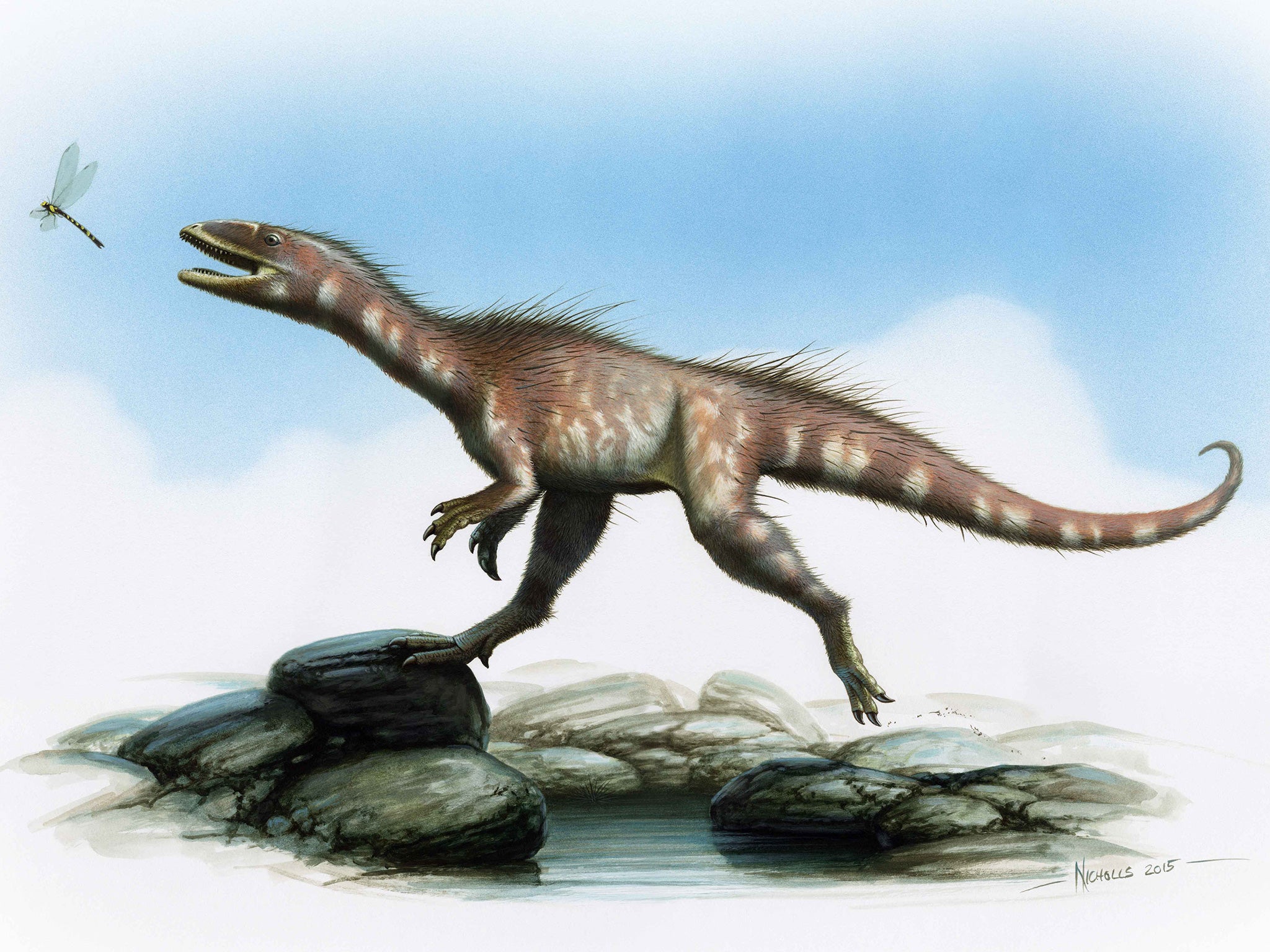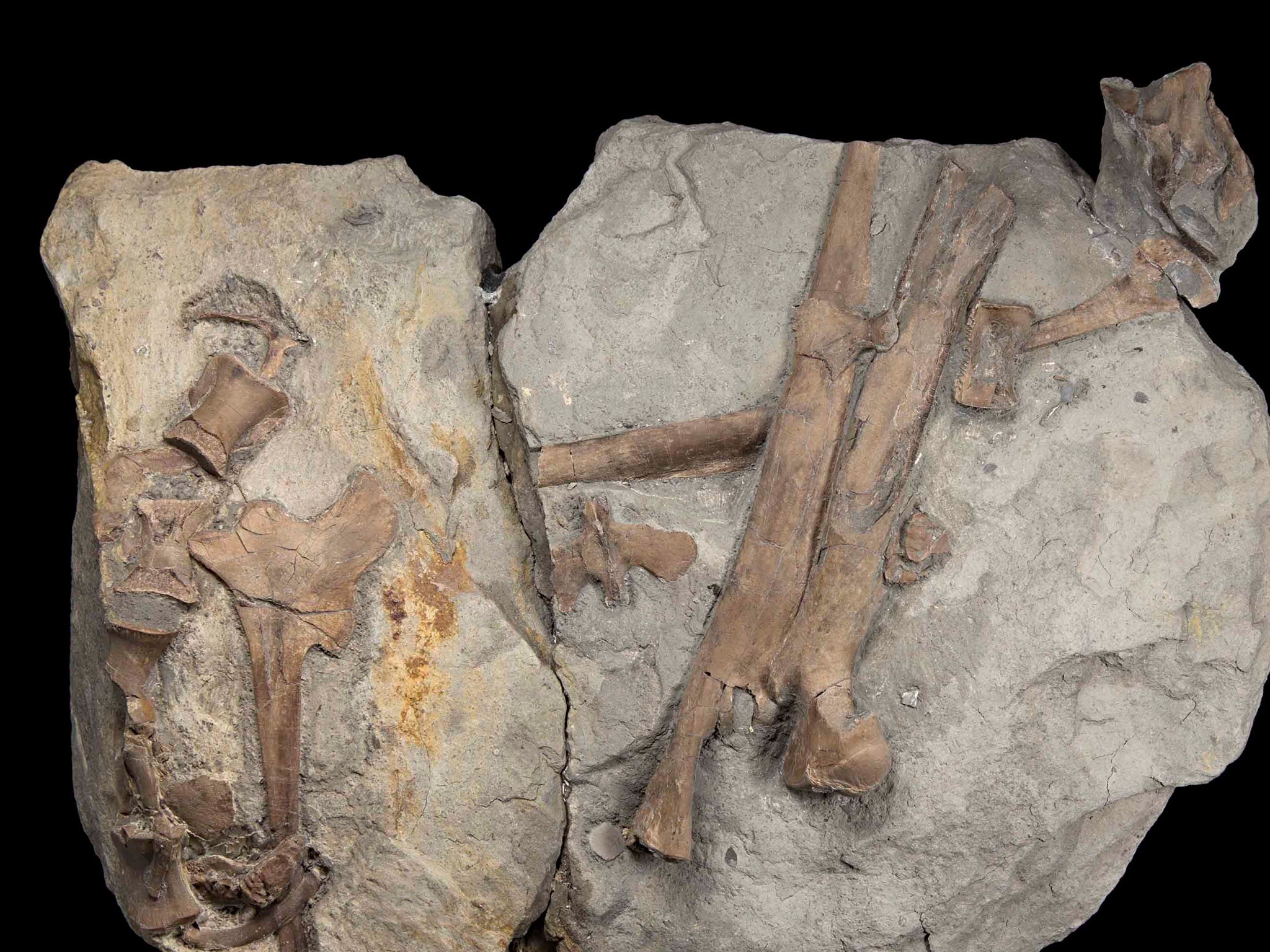The T-Rex has a Welsh cousin: New Jurassic-era dinosaur species discovered in Wales
The theropod, discovered by two brothers, dates back 200 million years

Your support helps us to tell the story
From reproductive rights to climate change to Big Tech, The Independent is on the ground when the story is developing. Whether it's investigating the financials of Elon Musk's pro-Trump PAC or producing our latest documentary, 'The A Word', which shines a light on the American women fighting for reproductive rights, we know how important it is to parse out the facts from the messaging.
At such a critical moment in US history, we need reporters on the ground. Your donation allows us to keep sending journalists to speak to both sides of the story.
The Independent is trusted by Americans across the entire political spectrum. And unlike many other quality news outlets, we choose not to lock Americans out of our reporting and analysis with paywalls. We believe quality journalism should be available to everyone, paid for by those who can afford it.
Your support makes all the difference.A new dinosaur species has been discovered in Wales dating back 200 million years to the earliest Jurassic period, scientists say.
The fossilised skeleton of the dog-sized creature, a theropod dinosaur, is described as a cousin of the giant tyrannosaurus rex and is believed to be the earliest specimen of a Jurassic era dinosaur ever to walk the Earth.
Described as the "find of a life-time" it was discovered on Lavernock beach near Penarth in the Vale of Glamorgan by two fossil-hunting brothers, Nick and Rob Hanigan after storms in spring 2014.
A cliff fall on the beach, revealed several loose blocks containing part of the skeleton of the dinosaur, including razor sharp teeth and claws.

It was analysed by experts from The University of Manchester, University of Portsmouth and the National Museum Wales who concluded it lived at the very earliest part of the Jurassic Period, 201 million years ago.
Dr John Nudds, senior lecturer in palaeontology at The University of Manchester said: "It is very rare to find this type of dinosaur at all and never before in Wales. In fact it is only the second dinosaur ever found in Wales.
"Theropods were vicious hunters who would prey on others. They were evolving rapidly at the start of the Jurassic period, but are only known from a few specimens worldwide.
"So this is a very exciting finding that could tell us a lot about how these species were evolving."

It is thought that the fossil was from a juvenile animal as some of its bones are not yet fully formed. Research is still under way, with a scientific paper in progress which will reveal the name of this new species in the next few months.
The fossil will be donated to the National Museum Wales by the Hanigan brothers.
The new dinosaur's name has yet to be revealed, although the Hanigan brothers revealed their idea of "RobandNick-A-Saurus" was turned down by palaeontologists.
Bank worker Rob joked: "Choosing a name was harder than picking one for my son."
Dr David Martill, reader in palaeobiology at University of Portsmouth, said: "The new dinosaur was brought to my attention last year and I went up to Lancashire to see the specimen.
"There, laid out on the table, was the most beautiful little theropod dinosaur ever found in Europe.
"Although the bones were scattered on a few slabs of limestone, they were in excellent condition, and much of the skull appeared to be there.
"The teeth were small, but needle sharp, slightly curved and with the most wonderful steak-knife serrations on their edges.
"I then went to visit the discovery site, which showed that the dinosaur came from strata deposited exactly at the end of the Triassic and the start of the Jurassic. I now had the job to determine if this was a Triassic or Jurassic dinosaur. That took a lot of effort, but we are now convinced it is the first ever Jurassic dinosaur."
The Welsh dinosaur was a small, slim, agile dinosaur, probably only about 50cm tall, which had a long tail to help it balance. It lived at the time when south Wales was a coastal region, offering a warm climate.
It had lots of small, blade-like, sharp, serrated teeth suggesting that it would have eaten insects, small mammals and other reptiles.
The dinosaur also probably had a fuzzy coating of simple proto-feathers, as did many theropod dinosaurs, and this would have been used for insulation and possibly display purposes. It may also have had simple quill-like structures for defence.
The rocks that contain the dinosaur fossil date back to a time immediately after the start of the Jurassic period, 201.3 million years ago.
At that time, the dinosaurs were just starting to diversify and the Welsh specimen is almost certainly the earliest Jurassic dinosaur in the world.
It is related to Coelophysis that lived approximately 203 to 196 million years ago in what is now the southwestern part of the United States of America. It also could be said to be a distant cousin of the much later tyrannosaurus rex.
Nick Hanigan said: "This is a once in a lifetime find - preparing the skull and to seeing the teeth of a theropod for the first time in 200 million years was absolutely fantastic - you just can't beat that sort of thing!"
The fossil will be on display at the main hall of National Museum Cardiff from June 9, until September 6, 2015.
Press Association
Subscribe to Independent Premium to bookmark this article
Want to bookmark your favourite articles and stories to read or reference later? Start your Independent Premium subscription today.
Join our commenting forum
Join thought-provoking conversations, follow other Independent readers and see their replies
Comments